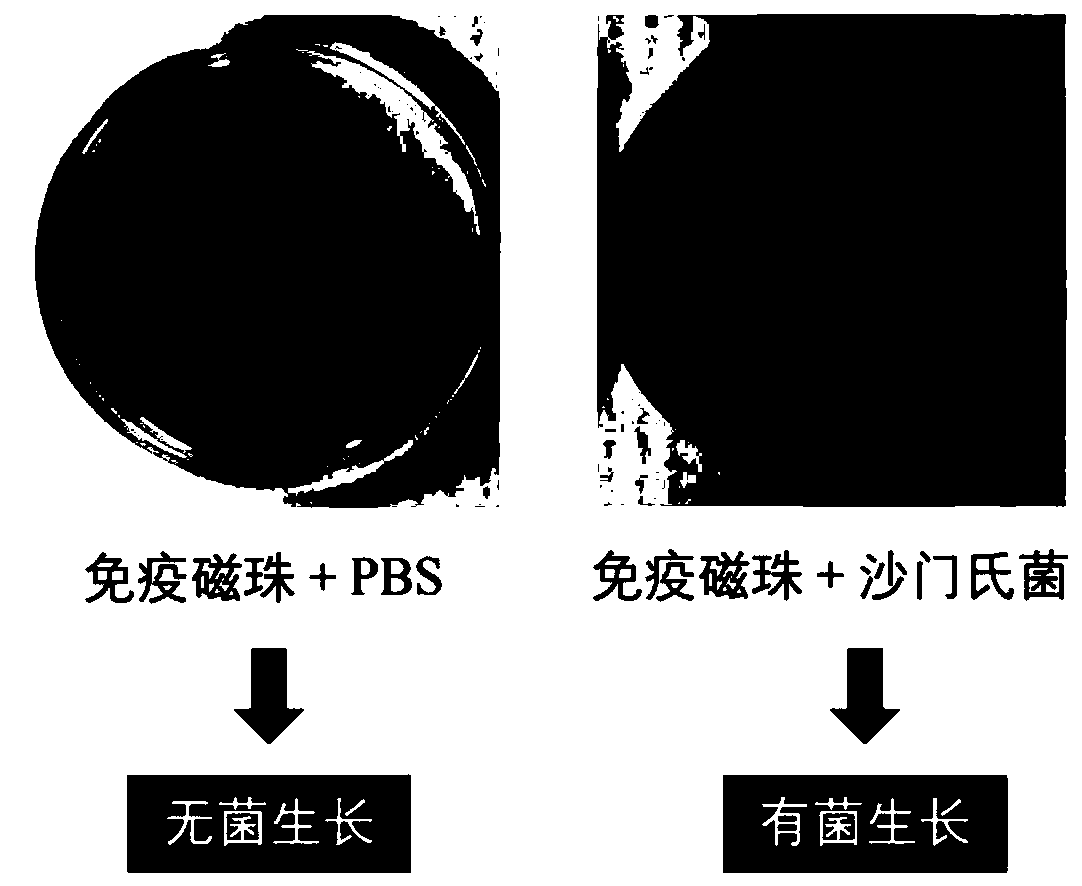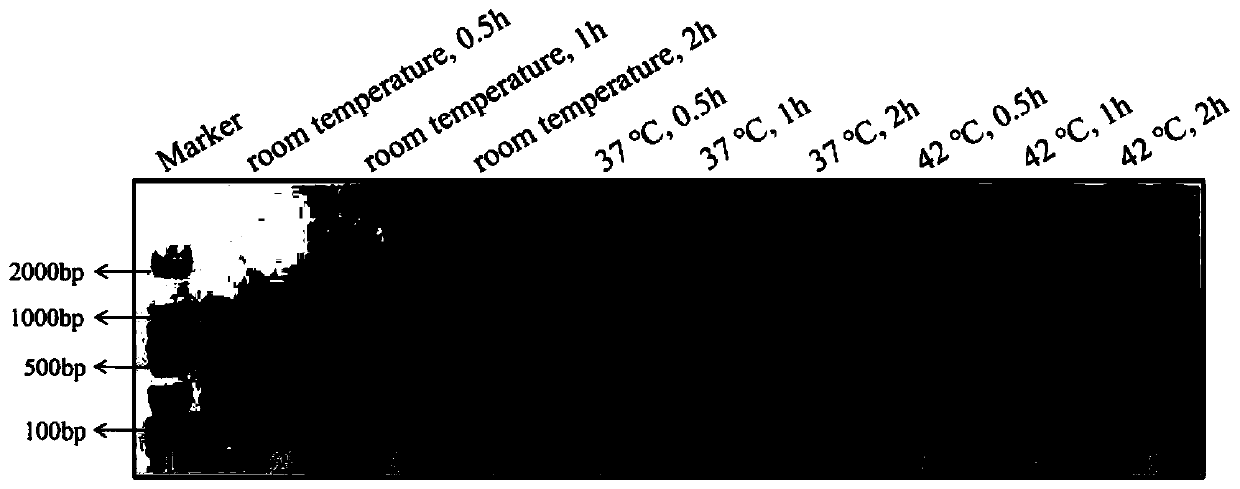Highly-sensitive and rapid method for detecting food-borne pathogenic bacteria based on signal cascade double-amplification system
A food-borne pathogenic bacteria, double-amplification technology, applied in measurement devices, instruments, material analysis by optical means, etc., can solve the problems of time-consuming, labor-intensive, false positives, unable to meet the purpose of immediate and sensitive detection, etc.
- Summary
- Abstract
- Description
- Claims
- Application Information
AI Technical Summary
Problems solved by technology
Method used
Image
Examples
Embodiment 1
[0052] Example 1——Salmonella typhimurium in the detection buffer system of immune HCR combined with SERS
[0053] 1 Preparation of immunomagnetic beads
[0054] 1.1 Take 200μg of carboxy magnetic beads in a 2mL centrifuge tube, remove the original preservation solution, add 200μL of MES buffer (pH6) to wash twice, and then activate with 200μL of freshly prepared EDC solution (10mg / mL) for 30 minutes;
[0055] 1.2 Wash once with PBST to avoid aggregation of magnetic beads, add 200 μL anti-Salmonella typhimurium rabbit polyclonal antibody solution (40 mg / mL) and incubate on a mixer for 3 hours, the magnetic beads without antibody are used as negative control;
[0056] 1.3 After washing once with PBST, store the immunomagnetic beads in 800 μL BSA blocking solution (mass fraction 1%, solvent 1×PBS buffer), and store them at 4°C for later use. For the characterization results, see figure 1 .
[0057] 2 Immunomagnetic beads capture Salmonella typhimurium
[0058] 2.1 Take 200 μL ...
Embodiment 2
[0069] Example 2—Immune HCR combined with SERS to detect Salmonella typhimurium in food system
[0070] 1 The preparation of immunomagnetic beads is the same as in Example 1
[0071] 2 Food sample pretreatment
[0072] 2.1 Take 10mL of commercially available ultra-high temperature sterilized milk, centrifuge at 8000rpm for 8 minutes, remove the upper layer of fat, and distribute 1.35mL in each tube into 2mL centrifuge tubes;
[0073] 2.2 Take 150 μL of a series of different concentrations of Salmonella typhimurium in a centrifuge tube containing 1.35 mL of sample, mix well, and obtain 1.5 mL of spiked sample;
[0074] 3 Spiked sample plate count
[0075] For the spiked sample with a large concentration of target bacteria, it was diluted with PBS buffer, and then 100 μL of 2 to 3 suitable continuous gradient samples were selected for each group, spread on LB solid medium, and incubated at 37°C for 24 hours. For counting, three groups of parallels were performed for each samp...
PUM
 Login to View More
Login to View More Abstract
Description
Claims
Application Information
 Login to View More
Login to View More - R&D
- Intellectual Property
- Life Sciences
- Materials
- Tech Scout
- Unparalleled Data Quality
- Higher Quality Content
- 60% Fewer Hallucinations
Browse by: Latest US Patents, China's latest patents, Technical Efficacy Thesaurus, Application Domain, Technology Topic, Popular Technical Reports.
© 2025 PatSnap. All rights reserved.Legal|Privacy policy|Modern Slavery Act Transparency Statement|Sitemap|About US| Contact US: help@patsnap.com



